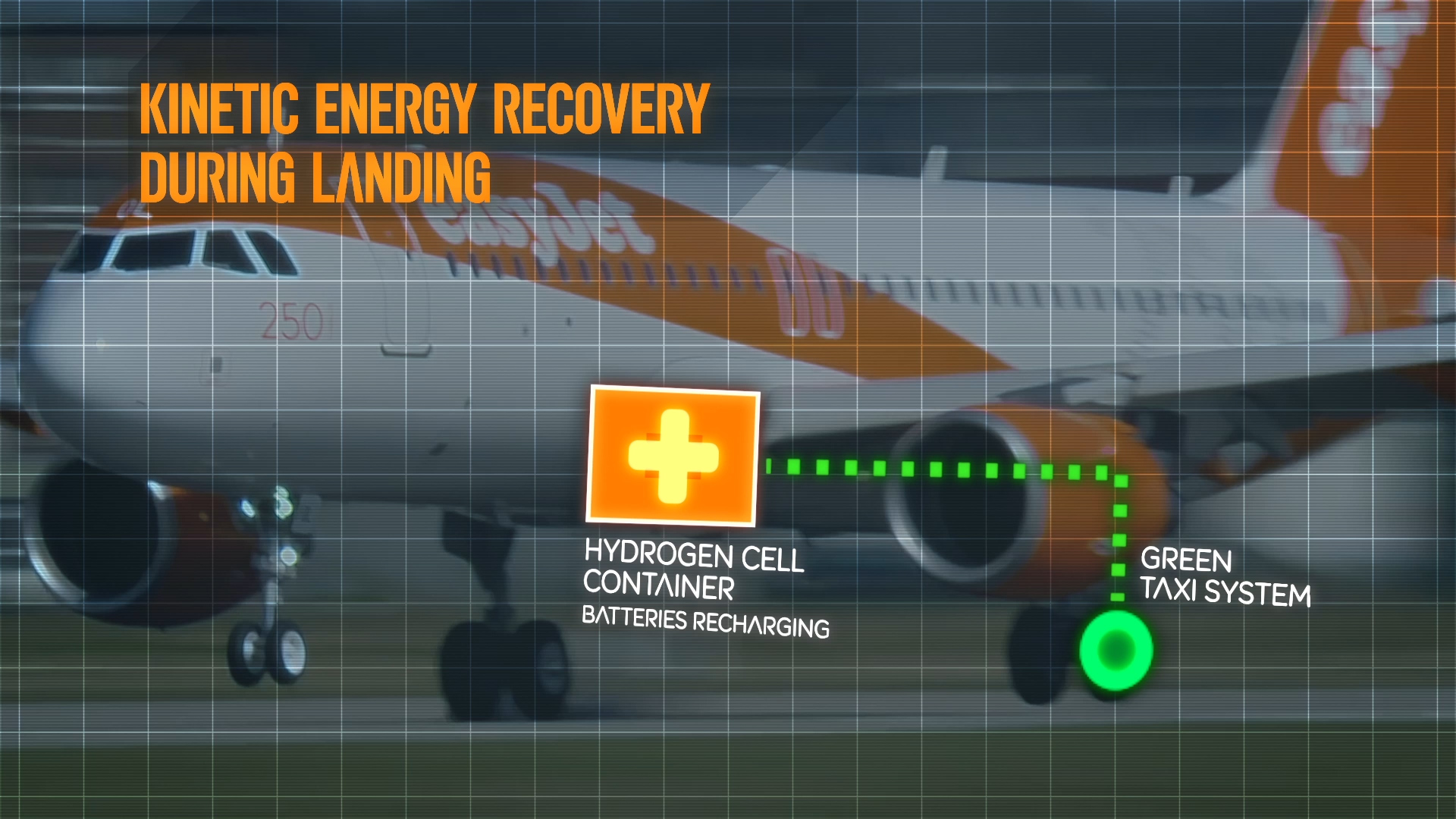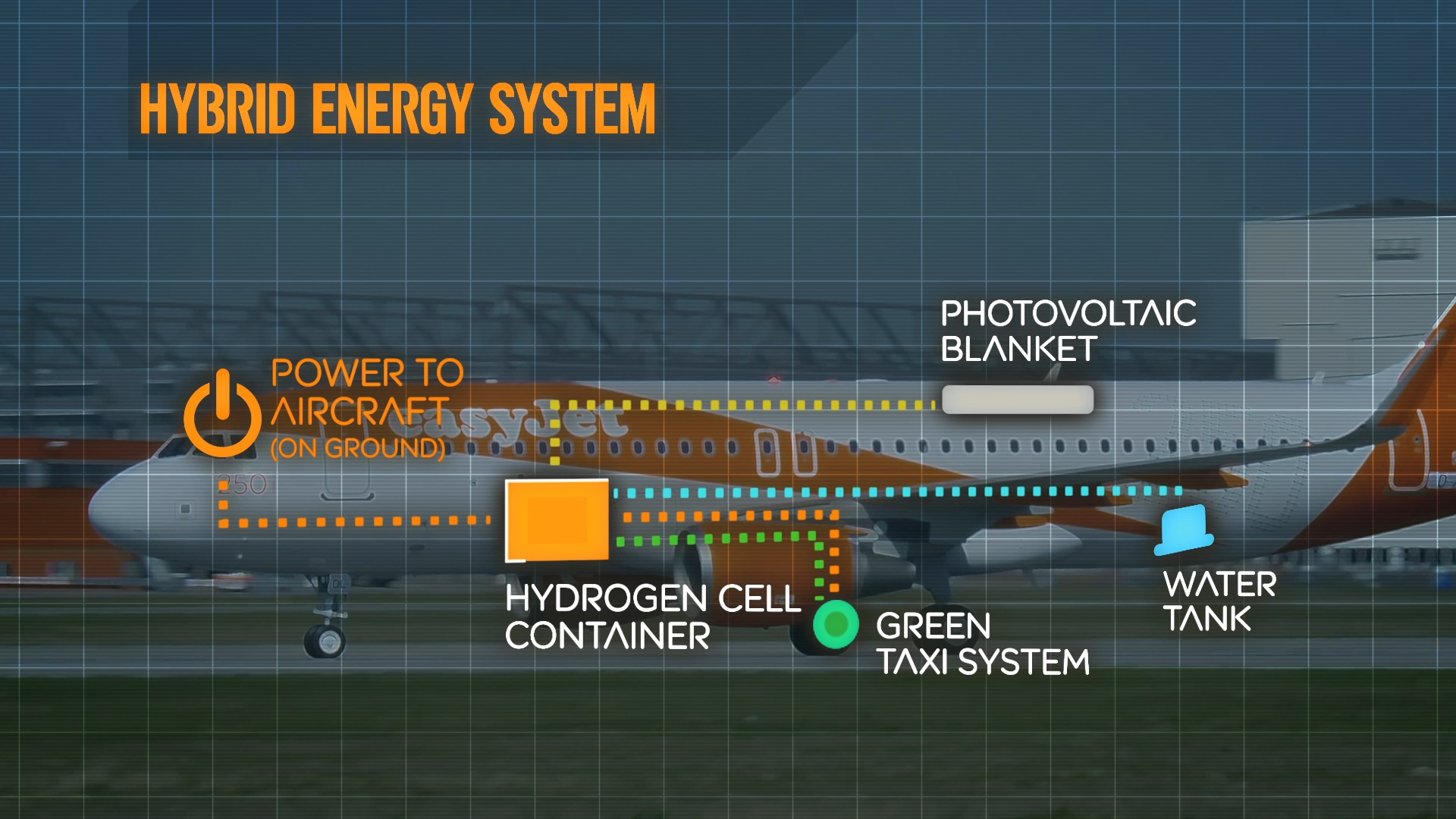European airline reveals plans for hybrid plane that will save on fuel
In order to make flight more environmentally friendly, as well as save money on fuel, one Europe’s largest airlines, easyJet, has revealed plans for a zero emissions hydrogen fuel system for its aircraft.
The hybrid plane could save about 50,000 tons of fuel each year, as well as the Co2 emissions that go along with it.
The hybrid concept was developed with the help of students from Cranfield University, who participated in a competition to outline what air travel might look like in 20 years.

easyJet’s hybrid concept plane employs a hydrogen fuel cell stowed in the aircraft’s hold. This zero-emissions system allows energy to be captured as the aircraft brakes on landing and is used to charge the system’s lightweight batteries when the aircraft is on the ground.
The energy can then be used by the aircraft – for example when taxiing – without needing to use the jet engines. According to easyJet, 4% of its annual fuel consumption is used while taxiing, the equivalent of 4 million miles.
Each aircraft would also come equipped with motors in their main wheels.Pilots would have complete control over the aircraft’s speed, direction, and breaking during taxiing with the help of electronics and system controllers. The system would also reduce the need for tugs to navigate aircraft in and out of stands, which would make turnaround more efficient.

The entire plane would produce only one waste product — fresh, clean water which could be used to refill the aircraft’s water system throughout the flight.
easyJet will now work with its industry partners and suppliers to apply the cutting edge technology much sooner with a trial set to take place later this year.
easyJet, in an effort to reduce its passengers’ carbon footprint, has set new targets for 2020 which will see a reduction of 7% over the next five years compared to emissions today, which are 81.05 grams CO2 per passenger kilometer.


Comments are closed, but trackbacks and pingbacks are open.